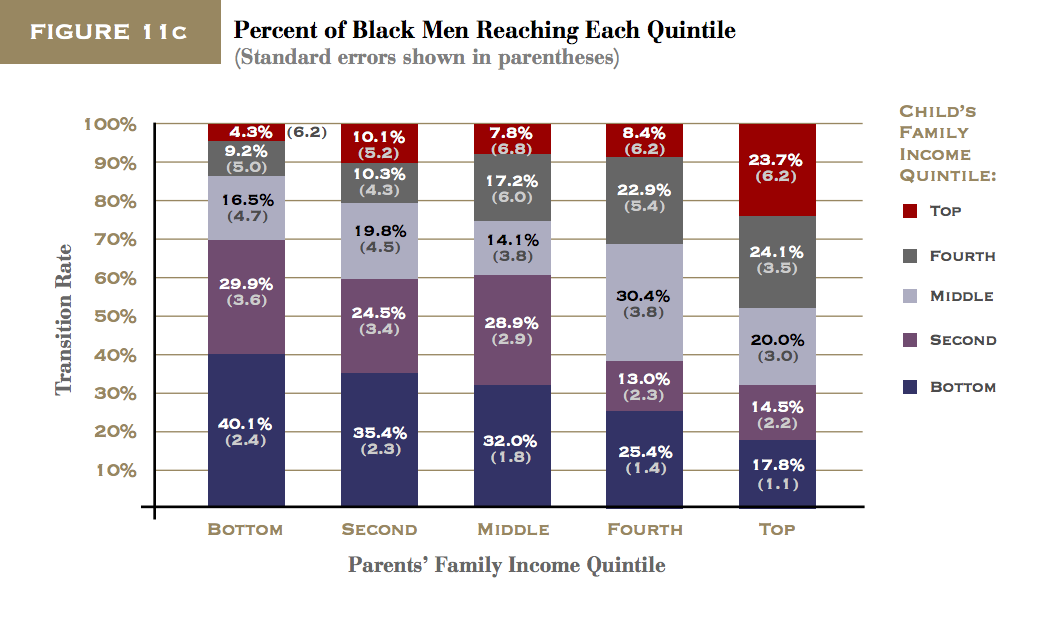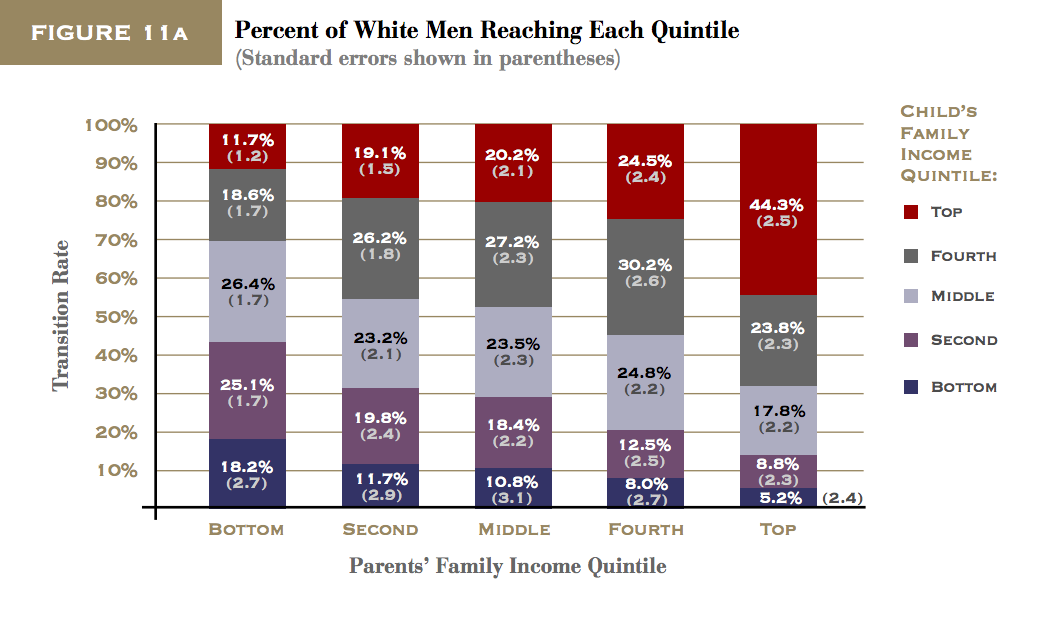In an era of rising income inequality, understanding the extent of economic mobility from one generation to the next in America has never been more important. Only if there is considerable opportunity for children from disadvantaged backgrounds to move beyond their parents’ place in the income distribution, may economic inequality be viewed as tolerable. This report introduces two new and flexible measures to examine upward relative mobility–the extent to which children can rise above their parents’ position when compared to their peers. The report also explores various factors that might account for racial differences in upward economic mobility rates.
Using the National Longitudinal Survey of Youth and measuring family income averaged over several years, the report discusses the following key findings:
The vast majority of individuals, 71 percent, whose parents were in the bottom half of the income distribution actually improved their rankings relative to their parents. However, the amount of their movement was not large.
- Only about 45 percent of those who started in the bottom half moved
up the income distribution by more than 20 percentiles relative to their
parents’ ranking.- Many of those who did manage to exceed their parents’ income started near the very bottom, where exceeding one’s parents is not a very steep hurdle.
As a result, only 38 percent of individuals who started in the bottom half of the income distribution moved to the top half of the distribution as adults


